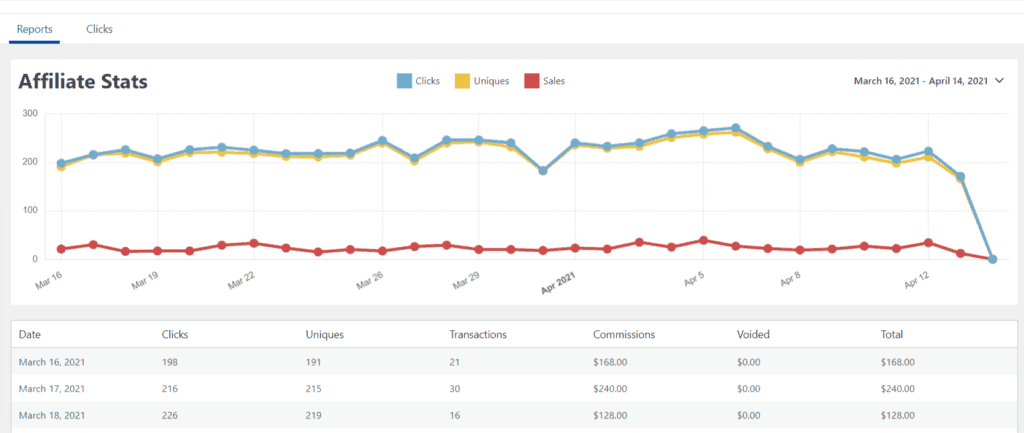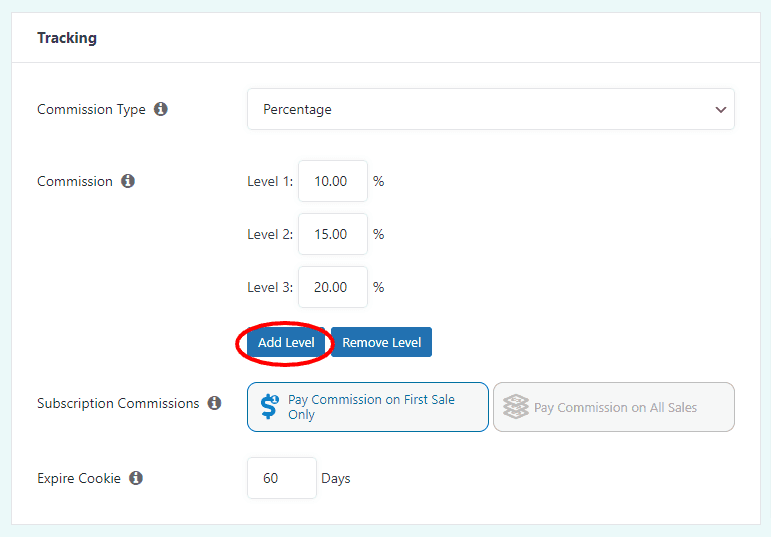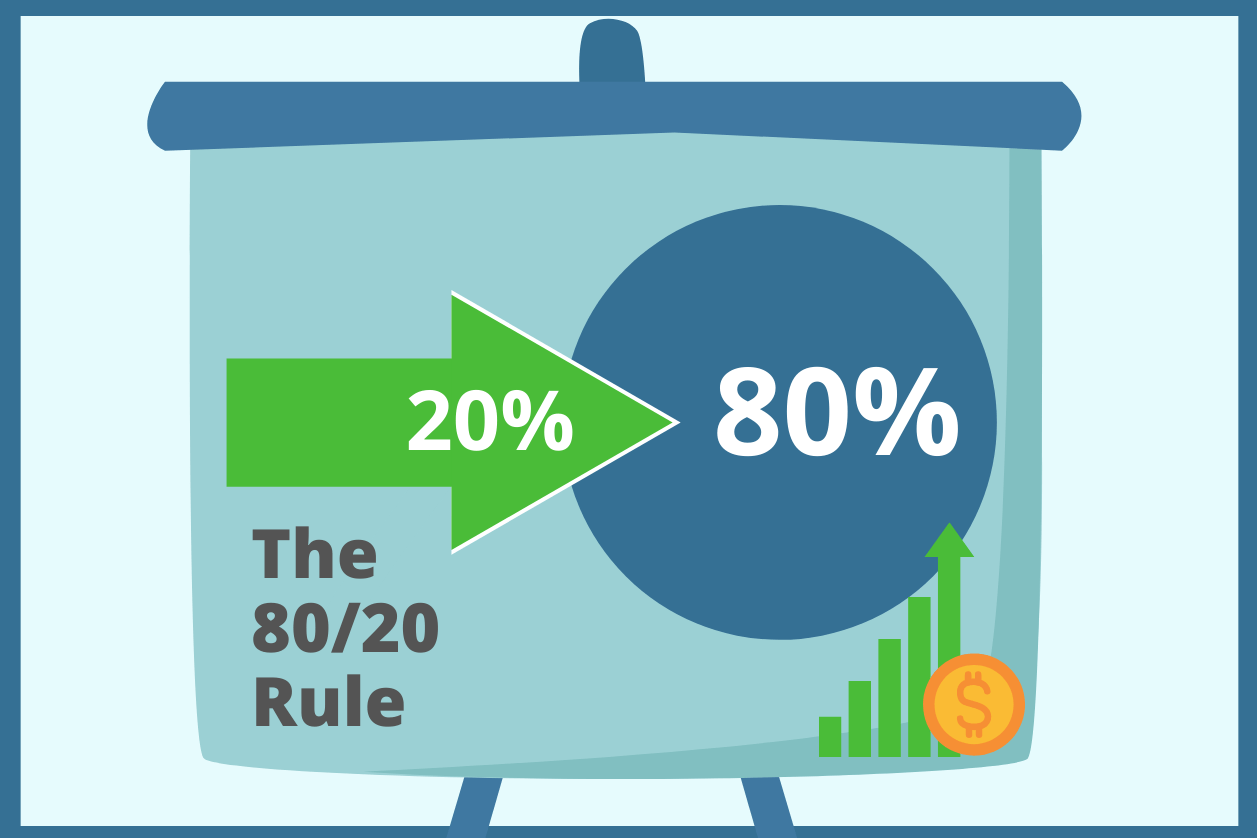Table of Contents
There's a lot that goes into a successful affiliate marketing program, including some of your budget. Therefore, it's important to make sure you're investing in partnerships that can actually bring in new leads and land conversions for your business.
That's why the 80/20 rule could be beneficial to your marketing strategy. It's a principle of thought that says 80% of sales come from 20% of your partners. By applying it to your program, you may be able to optimize it to maximize your return on investment (ROI).
In this article, we'll take a look at what the 80/20 rule is, and why it matters to affiliate marketing. Then, we'll offer tips on how you can apply it to improve your program. Let's get started!
An Introduction to the 80/20 Rule in Affiliate Marketing
The 80/20 rule can apply to many different areas, including affiliate marketing. In short, it states that 20% of your input results in 80% of your output. In other words, a small portion of your investment may, in fact, generate the bulk of your returns.
In affiliate marketing, this translates to 20% of your partnerships producing 80% of the sales for your program. With a discerning eye, you can determine who your top sellers are so you can reward them and encourage their efforts.
Similarly, by identifying the 80% who don’t perform as well, you can figure out how to work with them in a way that isn't a drain on your marketing budget. This might mean lower commission rates or fewer free samples of your products.
Furthermore, by using the 80/20 rule, you can determine which of your partners consistently underperform, and reconsider whether doing business with them is worthwhile. In turn, this can free up resources to reinvest in those who are bringing in the bulk of your affiliate sales.
How to Use the 80/20 Rule to Improve Your Affiliate Marketing Program (3 Key Tips)
By applying the 80/20 rule, you have little to lose and much to gain. After all, it’s a widely acknowledged observation that has a strong application in any financial setting. Here are three ways you can incorporate it into your affiliate marketing strategy.
1. Use a Tracking System to Monitor Conversions and Find Your Top Affiliates
Before you can reward top-performing affiliates, you have to figure out who they are. According to the 80/20 rule, you should be able to do this by looking at conversion rate data and identifying the fifth of your affiliates who land the most sales.
With a plugin such as Easy Affiliate, you’ll be able to analyze valuable data to understand how the 80/20 rule applies to your program. By creating unique links for each partner, it's possible to see who your top earners are, and who isn't bringing in as much revenue:

Once you've installed the plugin, simply navigate to your WordPress admin sidebar and click on Easy Affiliate > Reports to see the number of click-throughs, unique views, and sales for a given time period. You can also view a list of specific transactions and look to see which partners' names appear most frequently.
2. Reward Top-Performing Affiliates to Encourage Their Efforts
The success of your program can depend on the satisfaction of your affiliates. If they don't feel like their hard work is being adequately recognized, you could see a drop in their productivity.
Suitable rewards can not only help you to avoid that situation but could even motivate your affiliates to continually strive for more sales. Over time, it might also cultivate a greater sense of loyalty to your program.
With the 80/20 rule in effect, you can focus on acknowledging the top 20% of your affiliates. This will encourage your less successful partners to improve their sales rates, while also motivating high-performers to maintain their spots.
There are many ways to reward affiliates. One of the most common is to use tiered commissions. This involves giving partners a larger percentage of each sale once they reach a certain number of conversions per month.
For instance, affiliates who make five sales or less per month may only receive a 10% commission. However, those who land 50 conversions may earn 40% of the resulting revenue.
One of the easiest ways to set up tiered commissions is with our plugin. To do so, go to the back end of your WordPress site and click on Easy Affiliate > Settings> Commissions:

Using this page gives you the option to create multiple commission levels with varying rates by clicking on the Add Level button and typing the corresponding percentage into the relevant field.
Another way to add a little fun to your rewards is to run an affiliate contest. The criteria are up to you, but a sales or recruitment target over a set period of time is an easy option. Prizes could include money, free products or services, or even a vacation.
3. Focus Your Promotional Resources on Your Program’s Best Affiliates
Just as commission levels help you focus your monetary rewards on your top sellers, the 80/20 rule can help you use your promotional resources more effectively, too. In particular, you may want to prioritize sharing free products or exclusive coupon codes with the affiliates who have generated the most revenue.
To get started, consider what promotional resources your program is currently using. Some common examples include:
- Coupon codes: These are discounts affiliates can pass along to their audience.
- Free products: You may send affiliates free samples or items for them to review.
- Giveaways: This may be a single item or a bundle that affiliates promote to their audiences, usually as a prize for a contest or random drawing.
These resources can help expose potential customers to your products and encourage sales with exclusive offers. However, handing out items for free is a drain on your revenue, and giving coupons to every affiliate's followers could lead to over-discounting.
Research is important when providing these to affiliates. You might approach this as you would when deciding commission rates by scoping out your competition and considering your budget. This can guide who you share these resources with and which ones you use.
It's also prudent to be consistent with how free products and giveaways are used. Rewarding hard work can be beneficial, but it could be discouraging if your affiliates don't feel they're being supported equally.
Sharing your guidelines may help you avoid such issues arising. With appropriate standards in place, your affiliates will be able to see what they have to do to earn additional promotional resources.
Conclusion
For continued prosperity, your affiliate marketing program needs to invest the bulk of its efforts in the partners who are bringing in the most revenue. The 80/20 rule can be a valuable guide to help you get the results you want.
In this post, we shared three ways you can use the 80/20 rule to guide your affiliate program:
- Use a tracking system to monitor conversions and find your top affiliates.
- Reward top-performing affiliates to encourage their efforts.
- Focus your promotional resources on your program's best affiliates.
Do you have any questions about the 80/20 rule, and how you can use it in your affiliate marketing program? Let us know in the comments section below!
If you liked this post, be sure to follow us on Twitter, Facebook, and LinkedIn! And don't forget to subscribe in the box below.



Leave a Reply